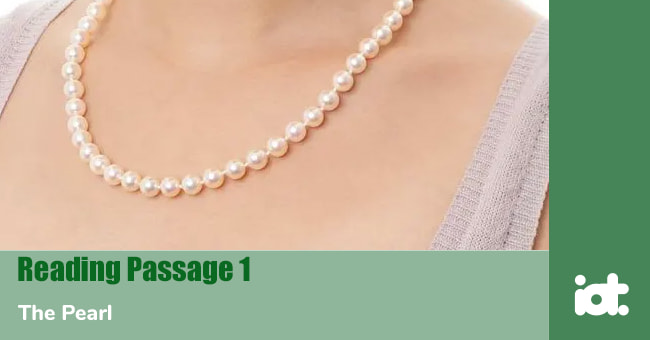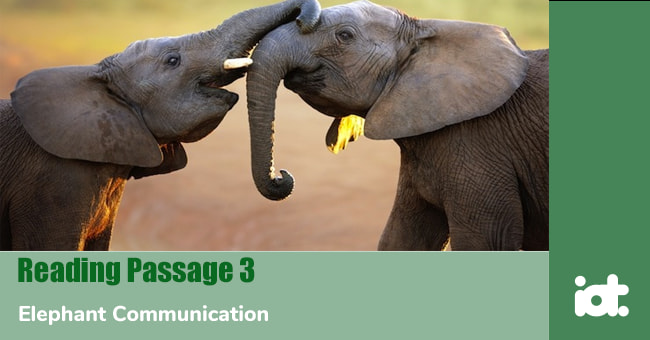
IELTS Recent Mock Tests Volume 6
- Đăng ngày: 15 Nov 2018
- Tests taken: 2,570,605
Đáp án
Part 1: Question 1 - 13
- 1 A
- 2 E
- 3 G
- 4 C
- 5 ancient Rome
- 6 Persia
- 7 Mallorca
- 8 Japan
- 9 Australia
- 10 Bahrain
- 11 TRUE
- 12 NOT GIVEN
- 13 TRUE
- 1 A
- 2 E
- 3 G
- 4 C
- 5 ancient Rome
- 6 Persia
- 7 Mallorca
- 8 Japan
- 9 Australia
- 10 Bahrain
- 11 TRUE
- 12 NOT GIVEN
- 13 TRUE
Part 2: Question 14 - 27
- 14 D
- 15 A
- 16 B
- 17 F
- 18 C
- 19 E
- 20 petrol-fueled internal combustion
- 21 identity and status
- 22 15 minutes
- 23 1973 oil crisis
- 24 (a) gas-guzzler
- 25 fuel power
- 26 toxic gas
- 27 B
- 14 D
- 15 A
- 16 B
- 17 F
- 18 C
- 19 E
- 20 petrol-fueled internal combustion
- 21 identity and status
- 22 15 minutes
- 23 1973 oil crisis
- 24 (a) gas-guzzler
- 25 fuel power
- 26 toxic gas
- 27 B
Part 3: Question 28 - 40
- 28 hammer
- 29 massive
- 30 pad
- 31 sinus cavities
- 32 trunks and feet
- 33 infrasonic/low
- 34 ecology
- 35 seismic signals
- 36 auditory communication
- 37 mate
- 38 ground
- 39 A
- 40 C
- 28 hammer
- 29 massive
- 30 pad
- 31 sinus cavities
- 32 trunks and feet
- 33 infrasonic/low
- 34 ecology
- 35 seismic signals
- 36 auditory communication
- 37 mate
- 38 ground
- 39 A
- 40 C
Leaderboard:
| # | Thành viên | Điểm | Thời gian | |
|---|---|---|---|---|
| Omera Siddiqua |  | 9.0 | 16:12 | |
| Sandesh Saluja |  | 9.0 | 16:27 | |
| Nguyen Minh Phong |  | 9.0 | 16:31 | |
| 4 | M Tu |  | 9.0 | 16:53 |
| 5 | khoi Nguyen |  | 9.0 | 16:55 |
| 6 | Adelheid Christine |  | 9.0 | 17:01 |
| 7 | Minh Nguyen |  | 9.0 | 17:01 |
| 8 | park chaeyoung |  | 9.0 | 17:50 |
| 9 | Dieu Hằng |  | 9.0 | 17:52 |
| 10 | Razia Naureen |  | 9.0 | 17:53 |
Giải thích chi tiết
Questions 1-4
Reading Passage 1 has eight paragraphs, A-H.
Which paragraph contains the following information?
Write the correct letter, A-H, in boxes 1-4 on your answer sheet.
1 ancient stories around pearls and its customers
2 difficulties in cultivating process
3 factors which decide the value of natural pearls
4 a growth mechanism that distinguishes cultured pearls from natural ones
- 1 Answer: A
Keywords in Questions
Similar words in Passage
Q1: ancient stories around pearls and its customers
A The pearl has always had a special status in the rich and powerful all through the history….
Note:
The keywords for Q1 are “ancient stories”, “its (pearls’) customers”.
After reading passage 1, we can see only paragraph A mention people in ancient Rome, women in Rome use pearls when going to bed…, it means that paragraph A contains information in Q1
Thus, the correct answer for Q1 should be “A”
- 2 Answer: E
Keywords in Questions
Similar words in Passage
Q2: difficulties in cultivating process
E No matter which method is used to get pearls, the process usually takes several years
… Sometimes, the irritant may be rejected
… only about 5% of them will be high-quality enough for the jewellery makers.
Note:
The keywords for Q2 are “difficulties”, “cultivating process”.
After reading passage 1, we can easily see only paragraph E mention that “the process (to get pearls) usually takes several years, “sometimes, the irritant may be rejected”, or “only about 5% of them will be high-quality enough for the jewellery makers”, it shows that cultivating process to get pearls very difficult.
Thus, the correct answer for Q2 should be “E”
- 3 Answer: G
Keywords in Questions
Similar words in Passage
Q3: factors which decide the value of natural pearls
G Several factors are taken into account to evaluate a pearl: size, shape, colour, the quality of surface and luster
Generally, the three types of pearls come in such order (with the value decreasing): natural pearls, cultured pearls and imitation pearls (which basically arc worthless).
Note:
The keywords for Q3 are “factors”, “value of natural pearls”.
After reading passage 1, we can easily see only paragraph G mention some factors can be used to evaluate to the value of pearls (size, shape, color, quality of surface…)
Thus, the correct answer for Q3 should be “G”
- 4 Answer: C
Keywords in Questions
Similar words in Passage
Q4: a growth mechanism that distinguishes cultured pearls from natural ones
C A cultured pearl undergoes the same process. There is only one difference between cultured pearls and natural ones: in cultured pearls, the irritant is a head called ‘mother of pearl’ and is placed in the oyster through surgical implantation.
Note:
The keywords for Q4 are “growth mechanism”, “distinguish cultured from natural pearls”.
After reading passage 1, we can easily see only paragraph C mention that “There is only one difference between cultured pearls and natural ones: in cultured pearls, the irritant is a head called ‘mother of pearl’ and is placed in the oyster through surgical implantation”. It means that “the mother of pearl in oyster through surgical implantation” is used to distinguish cultured pearls and natural ones.
Thus, the correct answer for Q4 should be “C”
Questions 5-10
Complete the summary below.
Choose NO MORE THAN TWO WORDS from the passage for each answer.
Write your answers in boxes 5-10 on your answer sheet.
In history, pearls have had great importance within the men of wealth and power, which were treated as gems for women in 5 . Also, pearls were even used as a medicine for people in 6 . There are essentially three types of pearls: natural, cultured and imitation. Most freshwater cultured pearls sold today come from China while 7 Island is famous for its imitation pearl industry. Good-quality natural pearls are exceedingly unusual. 8 often manufactures some of the glitteriest pearls while 9 produces larger size ones due to the favourable environment along the coastline. In the past, 10 in Persian Gulf produced the world’s best pearls. Nowadays, the major remaining suppliers of natural pearls belong to India. |
- 5 Answer: ancient Rome
Keywords in Questions
Similar words in Passage
Q5: In history, pearls have had great importance within the men of wealth and power, which were treated as gems for women in …
The pearl has always had a special status in the rich and powerful all through the history. For instance, women from ancient Rome went to bed with pearls on them, so that they could remind themselves how wealthy they were after waking up
Note:
The keywords for Q5 are “women in…”, “history”, “wealth and power”.
After reading paragraph A, we can see all keywords are mentioned in the same meaning in Q5
“ great importance” and “special status” refer to the same meaning in the context.
“men of wealth and power” and “the rich and power” are changeable in this case.
‘gems” and “pearls” refer to the same meaning.
“women in ancient Rome” and “women from ancient Rome” refer to the same things in this context.
Thus, the correct answer for Q5 should be “ancient Rome”
- 6 Answer: Persia
Keywords in Questions
Similar words in Passage
Q6: Also, pearls were even used as a medicine for people in…
In the eastern countries like Persia, ground pearl powders could be used as a medicine to cure anything including heart diseases and epilepsy.
Note:
The keywords for Q6 are “medicine for people”
We can assume the answer for Q6 may be a specific place (country, city…)
After reading paragraph A, we easily can see all keywords are mentioned.
We can read that “ground pearl powders could be used as a medicine to cure… in eastern countries like Persia”, it means that “pearls were used as a medicine for people in Persia.
Thus, the correct answer for Q6 should be “Persia”
- 7 Answer: Mallorca
Keywords in Questions
Similar words in Passage
Q7: while… Island is famous for its imitation pearl industry
The Island of Mallorca in Spain is renowned for its imitation pearl industry.
Note:
The keywords for Q7 are “island”, “imitation pearl industry”
We can assume the answer for Q7 may be a place (name of island)
After reading paragraph F, we easily can see all keywords are mentioned in the same meaning.
“famous for” and “renowned for” are interchangeable in this case.
The place we mentioned in Q7 should be “Island of Mallorca” or Mallorca Island
Thus, the correct answer for Q7 should be “Mallorca”
- 8 Answer: Japan
Keywords in Questions
Similar words in Passage
Q8. … often manufactures some of the glitteriest pearls
Japan’s Akoya pearls are one of the glossiest pearls out there,
Note:
The keywords for Q8 are “manufacture”, “glitteriest pearls”
We can assume the answer for Q8 may be a place (where glitteriest pearls are manufactured)
After reading paragraph G, we easily can see “Japan’s Akoya pearls are one of the glossiest pearls out there”, it means that Akoya pearls in Japan are one of the glitteriest pearls.
“Glitteriest pearls” and “glossiest pearls” are interchangeable in this case.
Thus, the correct answer for Q8 should be “Japan”
- 9 Answer: Australia
Keywords in Questions
Similar words in Passage
Q9. While… produces larger size ones due to the favourable environment along the coastline.
while the' south sea water of Australia is a cradle to bigger pearls.
Note:
The keywords for Q9 are “produce”, “larger size”, “favourable environment”, “coastline”
We can assume the answer for Q9 may be a place (where large size pearls are manufactured)
After reading paragraph G, we easily can see “while the' south sea water of Australia is a cradle to bigger pearls”, it means that the water in Australia is suitable for producing larger size pearls
“larger” and “bigger” are interchangeable in this case.
Thus, the correct answer for Q9 should be “Australia”
- 10 Answer: Bahrain
Keywords in Questions
Similar words in Passage
Q10. . In the past, … in Persian Gulf produced the world’s best pearls.
Historically, the pearls with the highest quality around the globe are found in the Persian Gulf, particularly around Bahrain.
Note:
The keywords for Q10 are “in the past”, “Persian Gulf”, “world’s best pearls”
We can assume the answer for Q10 may be a place (the area where produced best pearls)
After reading paragraph G, we easily can see “pearls with the highest quality around the globe are found in Persian Gulf, particularly around Bahrain”, it means that Bahrain in Persian Gulf produced the highest quality around the globe.
“pearls with the highest quality around the globe” and world’s best pearls” refer to the same meaning in this context.
Thus, the correct answer for Q10 should be “Bahrain”
Questions 11-13
Do the following statements agree with the information given in Reading Passage 1?
In boxes 11-13 on your answer sheet, write
| TRUE | if the statement agrees with the information |
| FALSE | if the statement contradicts the information |
| NOT GIVEN | If there is no information on this |
11 Generally speaking, the centre of cultured pearl is significantly larger than that of a natural pearl.
12 Sometimes, fake pearls can be more expensive.
13 The size of the pearls produced in Japan is usually smaller than those in Australia.
- 11 Answer: TRUE
Keywords in Questions
Similar words in Passage
Q11. Generally speaking, the centre of cultured pearl is significantly larger than that of a natural pearl.
There is only one difference between cultured pearls and natural ones: in cultured pearls, the irritant is a head called ‘mother of pearl’ and is placed in the oyster through surgical implantation. This results in much larger cores in cultivated pearls than those in natural pearls.
Note:
The keywords for Q11 are “speaking”, “center”, “cultured pearl”, “larger”, “natural pearl”
After reading paragraph C, we can read “a head called ‘mother of pearl’ and is placed in the oyster through surgical implantation”, “mother of pearl” refers to “the center of pearl” in this context.
In addition, “cultured pearl” and “cultivated pearl” are the same in this case.
“This results in much larger cores in cultivated pearls than those in natural pearls”, it means that the center (mother of pearl) of cultured pearl is larger than that of a natural pearl.
Thus, the correct answer for Q11 should be “True”
- 12 Answer: NOT GIVEN
Keywords in Questions
Q12. Sometimes, fake pearls can be more expensive.
Note:
The keywords for Q12 are “fake pearl”, “more expensive”
After reading passage 1, we cannot find any information relating to Q12.
Thus, the correct answer for Q12 should be “Not given”
- 13 Answer: TRUE
Keywords in Questions
Similar words in Passage
Q13
The size of the pearls produced in Japan is usually smaller than those in Australia.
Japan’s Akoya pearls are one of the glossiest pearls out there, while the' south sea water of Australia is a cradle to bigger pearls.
Note:
The keywords for Q13 are “size of pearl”, “smaller”
After reading paragraph G, we can read “the' south sea water of Australia is a cradle to bigger pearls”, it means that the size of pearls produced in Australia is bigger than those in Japan.
Thus, the correct answer for Q13 should be “True”
READING PASSAGE 1
You should spend about 20 minutes on Questions 1-13, which are based on Reading Passage 1 below.

The Pearl
A The pearl has always had a special status in the rich and powerful all through the history. For instance, women from ancient Rome went to bed with pearls on them, so that they could remind themselves how wealthy they were after waking up. Pearls used to have more commercial value than diamonds until jewellers learnt to cut gems. In the eastern countries like Persia, ground pearl powders could be used as a medicine to cure anything including heart diseases and epilepsy.
B Pearls can generally be divided into three categories: natural, cultured and imitation. When an irritant (such as a grain of sand) gets. inside a certain type of oyster, mussel, or clam, the mollusc will secrete a fluid as a means of defence to coat the irritant. Gradually, layers are accumulated around the irritant until a lustrous natural pearl is formed.
C A cultured pearl undergoes the same process. There is only one difference between cultured pearls and natural ones: in cultured pearls, the irritant is a head called ‘mother of pearl’ and is placed in the oyster through surgical implantation. This results in much larger cores in cultivated pearls than those in natural pearls. As long as there are enough layers of nacre (the secreted fluid covering the irritant) to create a gorgeous, gem-quality pearl; the size of the nucleus wouldn’t make a difference to beauty or durability.
D Pearls can come from both salt and freshwater sources. Typically, pearls from salt water usually have high quality, although several freshwater pearls are considered high in quality, too. In addition, freshwater pearls often have irregular shapes, with a puffed rice appearance. Nevertheless, it is the individual merits that determine the pearl’s value more than the sources of pearls. Saltwater pearl oysters are usually cultivated in protected lagoons or volcanic atolls, while most freshwater cultured pearls sold today come from China. There are a number of options for producing cultured pearls: use fresh water or sea water shells, transplant the graft into the mantle or into the gonad, add a spherical bead or do it nonbeaded.
E No matter which method is used to get pearls, the process usually takes several years. Mussels must reach a mature age, which may take up almost three years, and then be transplanted an irritant. When the irritant is put in place, it takes approximately another three years for a pearl to reach its full size. Sometimes, the irritant may be rejected. As a result, the pearl may be seriously deformed, or the oyster may directly die from such numerous complications as diseases. At the end of a 5- to 10-year circle, only half of the oysters may have made it through. Among the pearls that are actually produced in the end, only about 5% of them will be high-quality enough for the jewellery makers.
F Imitation pearls are of another different story. The Island of Mallorca in Spain is renowned for its imitation pearl industry. In most cases, a bead is dipped into a solution made from fish scales. But this coating is quite thin and often wears off. One way to distinguish the imitation pearls is to have a bite on it. Fake pearls glide through your teeth, while the layers of nacre on the real pearls feel gritty.
G Several factors are taken into account to evaluate a pearl: size, shape, Colour, the quality of surface and luster. Generally, the three types of pearls come in such order (with the value decreasing): natural pearls, cultured pearls and imitation pearls (which basically are worthless). For jewellers, one way to tell whether a pearl is natural or cultured is to send it to a gem lab and perform an X-ray on it. High-quality natural pearls are extremely rare. Japan’s Akoya pearls are one of the glossiest pearls out there, while the' south sea water of Australia is a cradle to bigger pearls.
H Historically, the pearls with the highest quality around the globe are found in the Persian Gulf, particularly around Bahrain. These pearls have to be hand-harvested by divers with no advanced equipment. Unfortunately, when the large reserve of oil was discovered in the early 1930s, Persian Gulf’s natural pearl industry came to a sudden end because the contaminated water destroyed the once pristine pearls. In the present days, India probably has the largest stock of natural pearls. However, it is quite an irony that a large part of India’s slock of natural pearls are originally from Bahrain.







